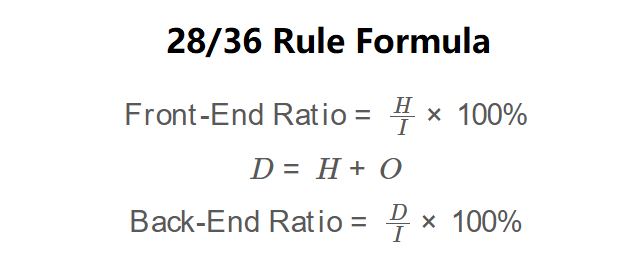 Home
Home
 Back
Back

Definition: The 28/36 Mortgage Rule Calculator evaluates whether your debt levels meet the 28/36 rule, a guideline used by lenders to assess mortgage affordability. It calculates the front-end ratio (housing costs to income) and back-end ratio (total debt to income).
Purpose: This tool helps individuals determine if their current debts are within safe limits for mortgage approval or additional borrowing, ensuring financial stability.
The calculator uses the following formulas:
\( \text{Front-End Ratio} = \frac{H}{I} \times 100\% \)
\( D = H + O \)
\( \text{Back-End Ratio} = \frac{D}{I} \times 100\% \)
Where:
Steps:
Calculating the 28/36 ratios is essential for:
Example: Check if your debts comply with the 28/36 rule with a monthly income of $4000, housing costs of $900, and other debts of $300:
Q: What is the 28/36 mortgage rule?
A: The 28/36 rule is a lending guideline where housing costs should not exceed 28% of monthly income (front-end ratio), and total debt should not exceed 36% (back-end ratio).
Q: What counts as housing costs?
A: Housing costs include mortgage payments, property taxes, homeowners insurance, and homeowners association fees.
Q: Can I still get a mortgage if I exceed the 28/36 rule?
A: Some lenders may approve loans with higher ratios, but it may require a higher credit score, larger down payment, or compensating factors.